Program & Schedule | The Paydirt Seminars
- RP
- Sep 19, 2024
- 13 min read
Updated: Oct 2, 2024
A series of talks dedicated to examining the intersections between art, finance, and resource extraction. These
talks are part of the exhibition One Hand Washes the Other by Joshua Schwebel at Struts Gallery. Interested people are invited to attend via the zoomlinks below.
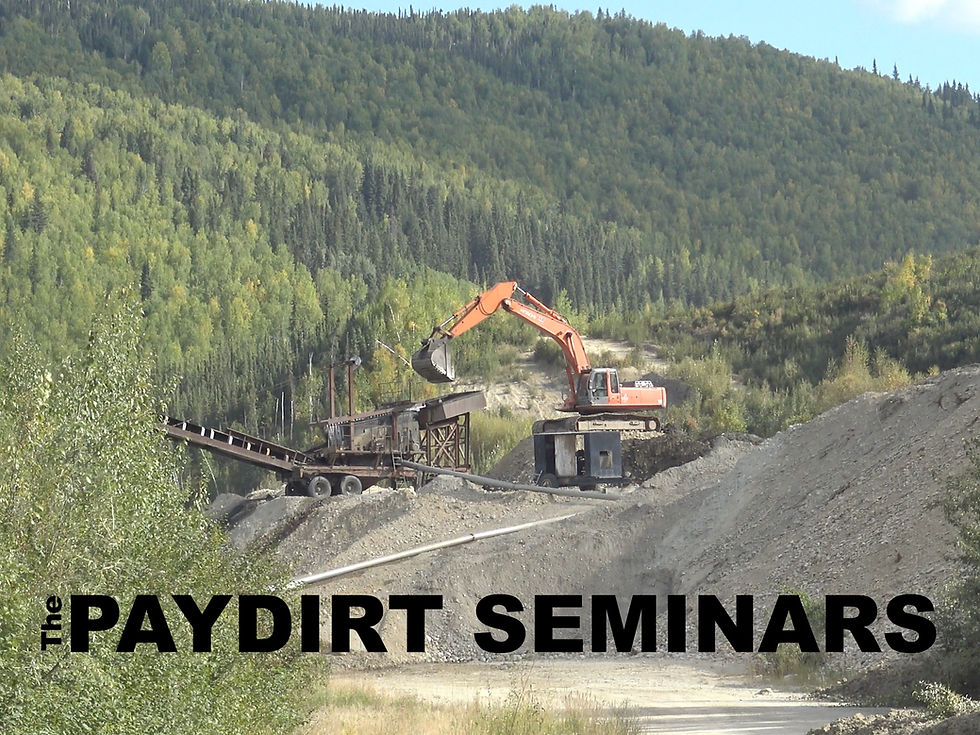
Wed. OCT. 2, 19h (ADT)
Sebastian De Line | Racial Capital from the Arctic Circle to the Global South: Indigenous Labour in Museum Collections
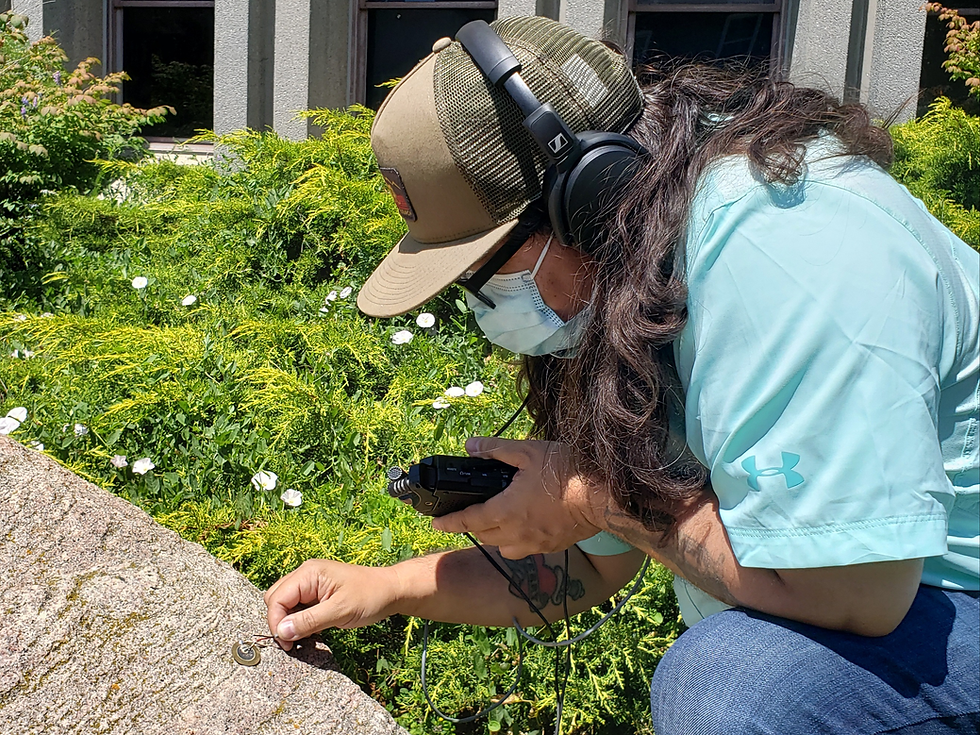
In this talk, De Line will discuss the liveliness of an arctic-mined diamond in possession by a private collector that was loaned for research and exhibition by the Smithsonian Institution’s National Museum of Natural History. The case study reveals how values and unrested labour are extracted from Indigenous ancestor rocks by collectors and museums. The curatorial narrative of the Foxfire diamond evokes an idea of “clean” diamond commodification attributed to the Global North in contrast to the “blood diamonds” of the Global South.
Sebastian De Line is an artist, scholar and Associate Curator, Care and Relations at the Agnes Etherington Art Centre at Queen’s University. Their academic research focuses on a critique of capitalist values and economies that transform agential and Indigenous, Black and racialized ancestors into labouring “objects” of extraction, accumulation and consumption determined by acquisition criteria within museum collections. Publications include the Journal of Visual Culture, and Künste dekolonisieren: Ästhetische Praktiken des Lernens und Verlernens (Brill). Sebastian is currently preparing their doctoral dissertation into a book manuscript, entitled, Postmortem Economies in Art: The Carceral Value and Unrested Labour of Ensouled Museum Collections.
Wed. OCT. 9, 19h (ADT)
Maggie Flynn | Slippery Slopes and Saying Nope: the responsibility of art institutions in the actions of their corporate sponsors
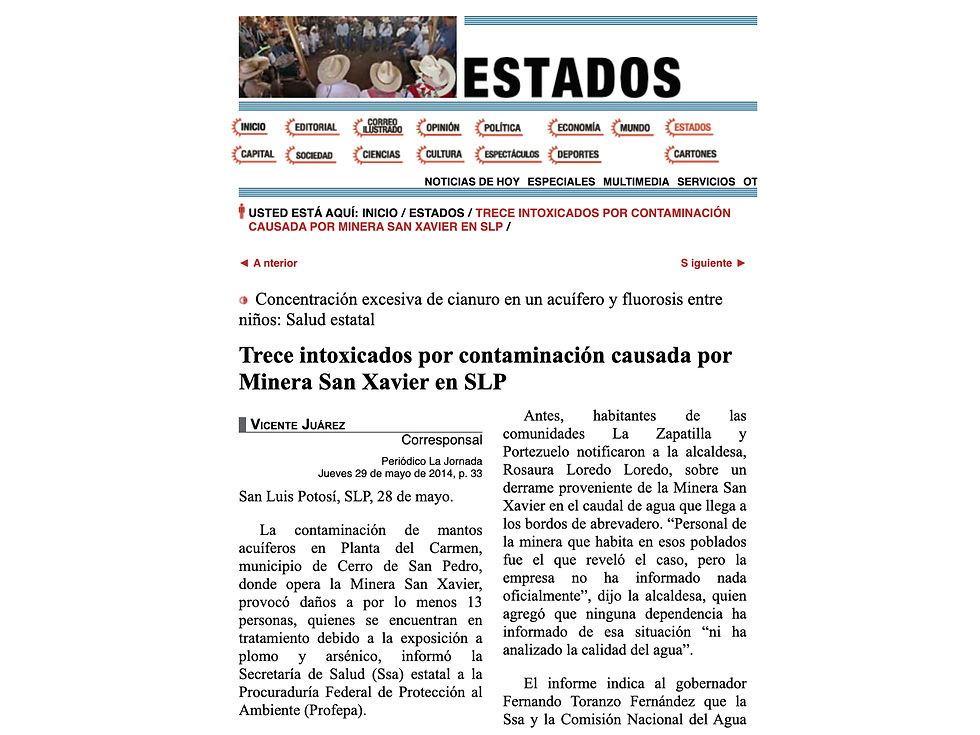
The benefits of corporate sponsorship can go in many directions - more money for the museum, more programming for the public, maybe some trickle down for higher pay for artists or staff, and of course, a reputation boost for the sponsor. But as much as the museum has the power to improve the reputation of the sponsor, the reputation of the sponsor has the power to destroy the trust built between audience and museum.
Trust is a crucial ingredient in making culture. When those at the helm of institutions act as if the sources of their funding have nothing to do with the cultural content they are creating, they are either a) dishonest or b) bad at their jobs. It is the job of a cultural worker to contextualize the choices made in the creation, display, interpretation and promotion of any exhibition or artwork. Why would any keen curator act as if the work of contextualization is irrelevant when it comes to the budget? It is, of course, incredibly inconvenient when a corporate sponsor has a plethora of human rights violations going on. Or an ongoing record of environmental negligence. Or is in a legal battle to dispossess Indigenous people of their land. These details, if noted in the exhibition catalogue, might undermine the artistic intentions of the work. If that is the case, perhaps the appropriateness of the sponsor should be reconsidered altogether.
In this talk, Maggie will zoom in on some details from their work “Trickle Down”, which connects art institutions and their extractive industry sponsors to the people and places that were harmed by their actions. Maggie will discuss research methods that can be applied when considering the track record and impact of a corporate sponsor.
Maggie Flynn is an artist, writer, and organizer. Her practice feels like: (listening to all the sounds of a word) x (hard pragmatism) x (deep pleasure). These feelings are explored through artist books, long-term performances, and installations.
Her work has been shown in Canada and internationally with organizations like the Art Gallery of York University, Intersite Festival, The Rhubarb Festival, The Workers Arts and Heritage Centre, M:ST, 7a*md8, and the New Gallery. She has also contributed to the cultural field through staff roles at Medalta in the Historic Clay District and Whippersnapper Gallery.
Flynn is a settler of Irish and French ancestry. She lives on unceded land that is the traditional territory of the Abenaki people.
Sun. OCT. 13, 14h (ADT)
RYBN.org in conversation with Alain Deneault | The Great Offshore
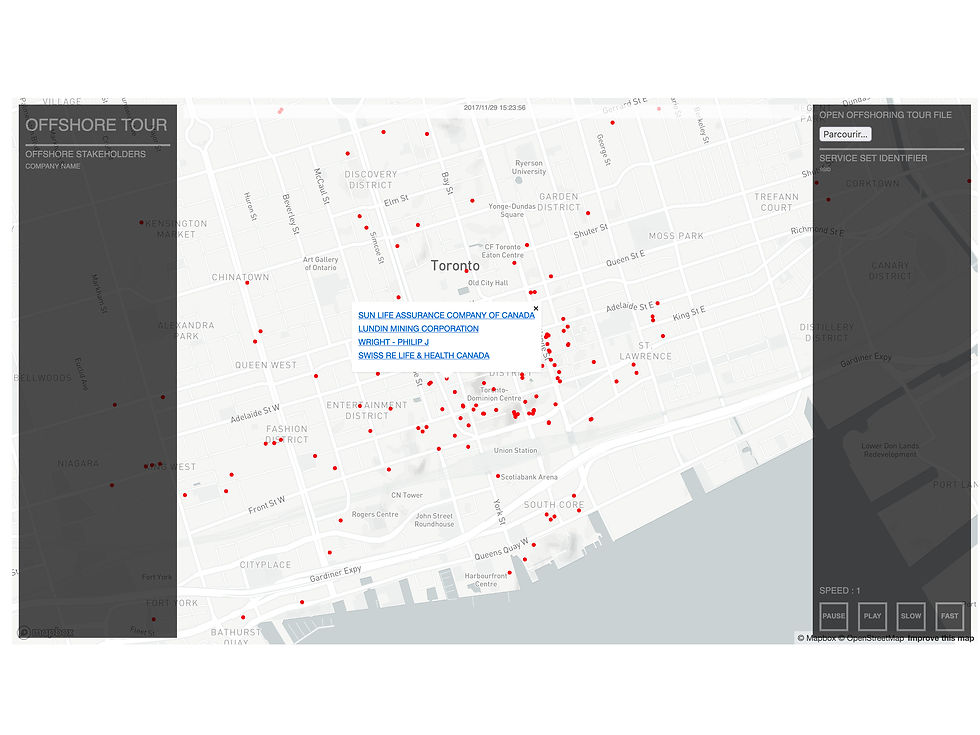
Alain Deneault is known for his book Noir Canada: Pillage, corruption et criminalité en Afrique and the legal proceedings that followed its publishing. He was program director at the Collège international de philosophie in Paris from 2016 to 2022. He teaches at the Shippagan campus of the Université de Moncton on the Acadian Peninsula. He is the author of critical essays, notably on managerial ideology, the sovereignty of private powers and the history of the economy.
RYBN.ORG (1999) is an artist collective based in Paris, leading extra-disciplinary investigations on complex systems and phenomena within the realms of economics and cybernetics – high-frequency trading, financial algorithms, flash crashes, market infrastructures, tax avoidance opaque schemes and offshore financial circuits, artificial intelligence, digital labor, etc.
In 2021, they published the French-language anthology “The Great Offshore – Art, money, sovereignty, governance, colonialism” published by Éditions UV.
And, due out in October 2024, the tactical manual “ALGOFFSHORE, The Art
Wed. OCT. 23, 19h (ADT)
Beyond Extraction
Mining at the Museum and What it Takes
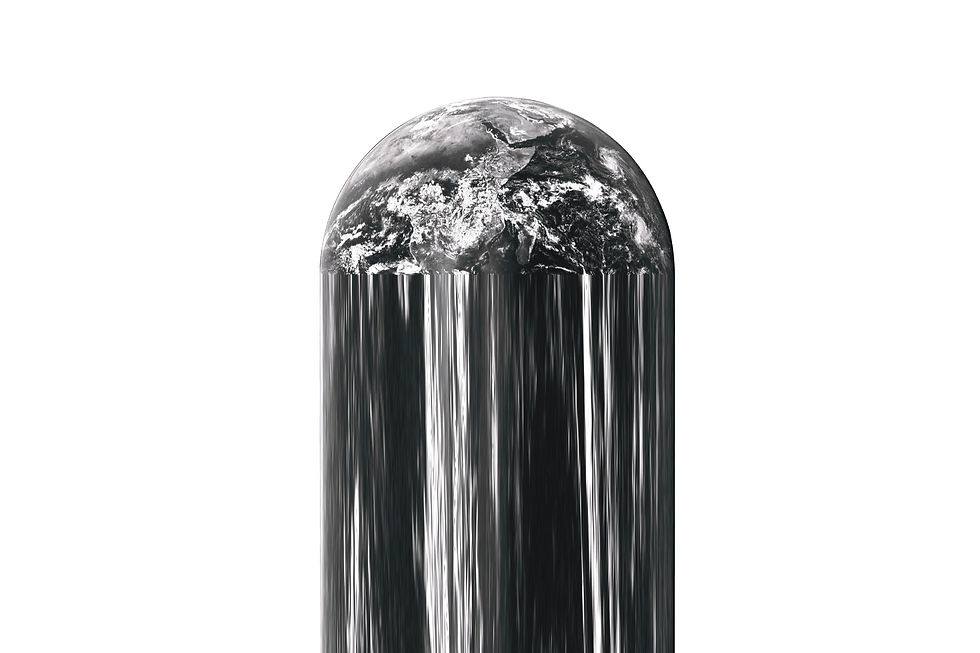
Join Beyond Extraction members Camille-Mary Sharp, Christopher Alton, and Zannah M. Matson as they reflect on some of the collective’s recent counter-extractive projects. Beginning with a brief overview of the insidious hold that extractive industry has over Canadian culture—particularly museums—this seminar will highlight select stories from the 2022 counter-tour “Mining at the Museum” at the Royal Ontario Museum (Toronto, Canada) and look to other interventions illustrating the collective’s praxis-oriented framework of counter-pedagogy.
Beyond Extraction (beyondextraction.ca) is an interdisciplinary collective of researchers, writers, artists, and activists who critically investigate and resist resource extraction in its various forms. We approach ‘extraction’ as an ontology of production, consumption, and wasting practices, and we seek to platform the voices, stories, and struggles that confront extractive industry beyond traditional academic venues. Recent projects include a forum to share the impacts of the proposed Belo Sun Volta Grande project organized with Amazon Watch as a part of #DisruptPDAC 2024, a counter-tour of the Royal Ontario Museum’s minerals exhibit titled “Mining at the Museum”, and What it Takes—a colouring book designed to counter the influence of mining corporations in public education. Camille-Mary Sharp is a Postdoctoral Associate at the Centre for Sustainable Curating/Department of Visual Arts at Western University; Zannah Matson is an Assistant Professor in Environmental Design at the University of Colorado Boulder; Christopher is PhD candidate at the University of Waterloo School of Planning.
Wed. OCT 30, 19h (ADT)
Jackie Olson | Artist talk
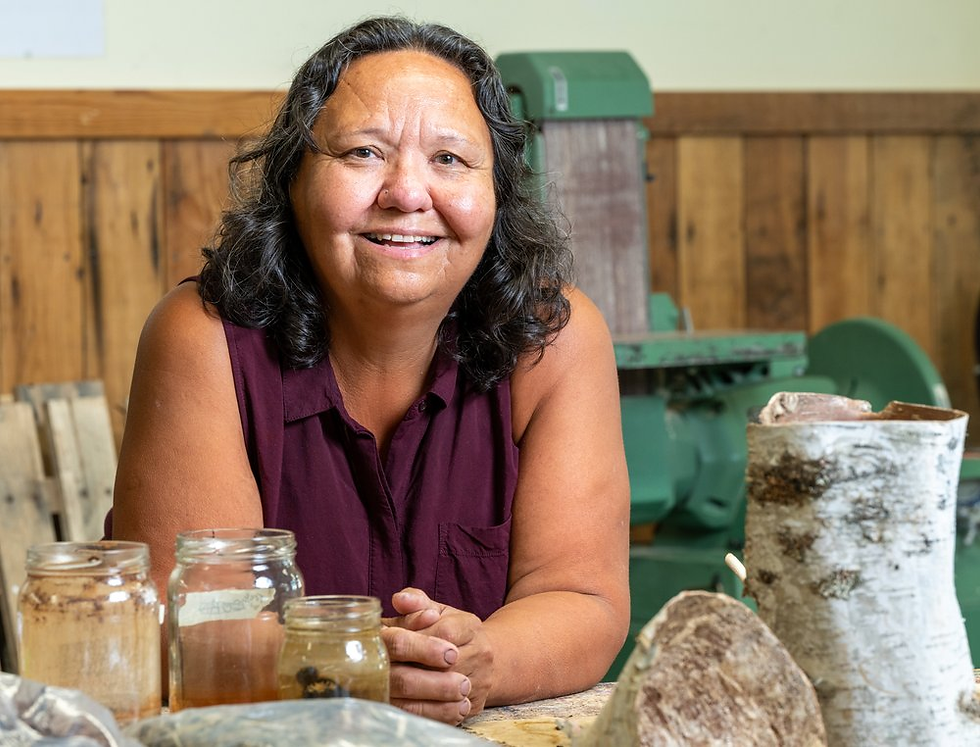
In my artistic practice I work through processes of reclamation, witnessing and accompanying the regrowth of nature in the wake of miners’ destruction of the surface of the land. I work with willow, which is what first grows back over the machinery and rubble. Watching the way willow grows and working with willow to make my art is a way to learn from nature, and to understand how nature responds and adapts to the invasions and destructions caused by mining. Willow teaches me how to have hope when I see how the miners treat the land, and through my artistic practice I try to witness and communicate that hope. I have also been involved in advocacy and governance of the Tr’ondëk Hwëch’in Nation. Through these intertwined practices I have tried to resist the extraction of resources from our community and tried to help our community grow and thrive.
I will be speaking about my ongoing series of works responding to the impacts of gold mining on our traditional territory, the destruction of the environment, and the resilience of nature.
Jackie Olson was born and raised in Dawson City and is a citizen of the Tr’ondëk Hwëch’in First Nation. Trained as a painter, Jackie received a BFA from the Alberta College of Art in 1992, and has been creating and learning new art forms since. Jackie’s work has been featured in exhibitions across Canada including the Walter Phillips Gallery (Banff, AB), Harcourt House (Edmonton, AB), and a forthcoming solo exhibition at the ODD Gallery (Dawson City, YT). Her work lives in many private and public collections, including the Bavaria State Anthropology Museum (Germany), Indigenous Art Centre (Canada), and the Yukon Permanent Art Collection (Canada). Jackie holds a faculty position with the Yukon School of Visual Arts, and recently curated the DIRE exhibition in Dawson City, which invited several Indigenous northern artists to create new works honouring salmon-as-life. In 2022 Jackie was awarded the Yukon Hall of Innovator’s Lifetime Achievement Award for her transformative reimagining of age-old Yukon practices as an inspired new way of creating art.
Sun. NOV. 3, 14h (ADT)
Nizan Shaked | Museums and Wealth: The Politics of Contemporary Art Collections
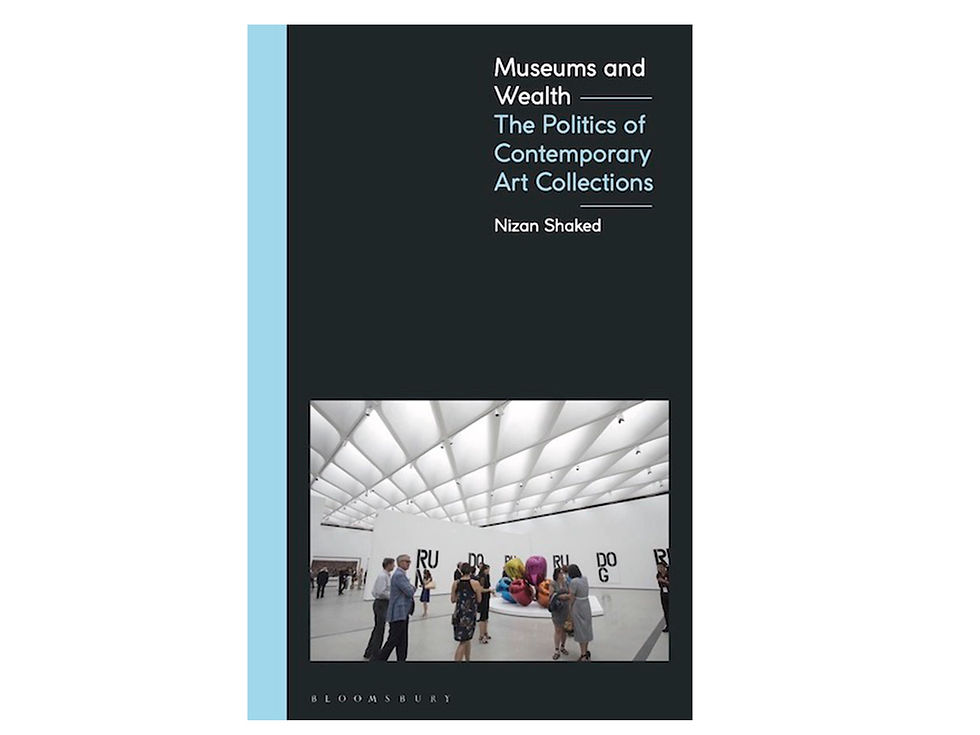
This seminar will show several ways in which art institutions participate in funneling public resources towards private wealth accumulation. Looking at how the financialization of art has exacerbated the social contradictions between communities and institutional stakeholders, it also describes how the dependency of museums on wealth obstructs divestment and other abolitionist processes.
Nizan Shaked is author of Museums and Wealth: The Politics of Contemporary Art Collections (Bloomsbury, 2022) and The Synthetic Proposition: Conceptualism and the Political Referent in Contemporary Art (Manchester University Press, 2017). Her article “Museums After Value-Form Theory,” is forthcoming in the Routledge Companion to Marxism in Art History. Select articles include: “American Monument: Race and Class” (Oxford Art Journal), “Getting to a Baseline on Identity Politics: the Marxist Debate,” (Routledge Companion to African American Art History), and “Propositions to Politics: Adrian Piper’s Conceptual Artwork,” in Adrian Piper: A Reader (New York: The Museum of Modern Art). She is a professor of contemporary art history, museum and curatorial studies, at California State University Long Beach.
Wed. NOV. 6, 19h (AST)
Sydney Hart | Hidden Stories: On the Values of Financial Information in Contemporary Art
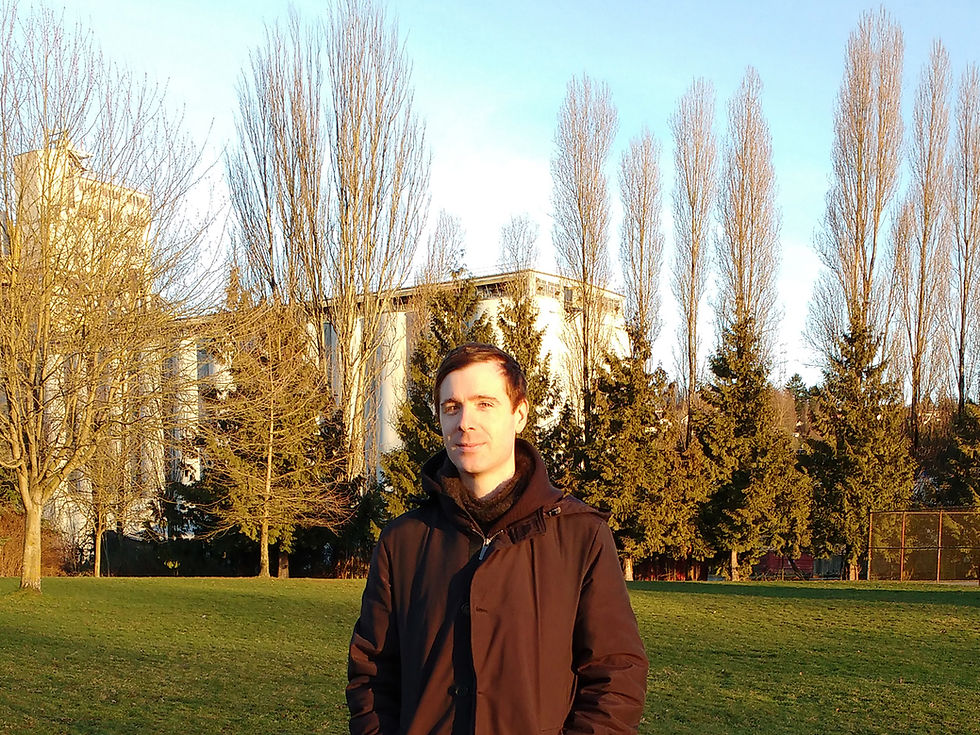
In his 1936 essay "The Storyteller," Walter Benjamin reflected on media of his day, including newspapers, to distinguish information from storytelling. For him, information is characterized by "prompt verifiability", the requirement that it appear "understandable in itself", and transience: its value "does not survive the moment in which it was new." A story, however, "does not expend itself. It preserves and concentrates its energy and is capable of releasing it even after a long time." Benjamin's dichotomy can shed light on aspects of contemporary art, notably art practices engaging in investigations to display information as art. In their 2021 book Investigative Aesthetics, Eyal Weizman and Matthew Fuller write that to investigate means "to work out the genesis of an incident" and to assemble "truth claims from a collage of fragments." How does the transience of information relate to the temporal dimensions of such a laboured construction, in art? Through what means can information renew its value, past the moment of revelation? This essay surveys post-conceptual art practices that incorporate financial information as material or subject-matter, examining the work of contemporary artists including Maggie Flynn, Ibghy and Lemmens, Andrea Fraser, Hans Haacke, and Mark Lombardi.
Sydney Hart is a writer, artist, and sessional faculty member in the Faculty of Culture and Community at Emily Carr University of Art + Design. He received a PhD in Cultural Studies from Queen’s University (Kingston, ON) and an MA in Aesthetics and Art Theory from the Centre for Research in Modern European Philosophy (London, UK). His doctoral thesis, Aerial Captures: Extractivism and the Logistical Media of Air Travel in Postwar Canada, notably investigated Canada’s gold mining industry through its flight networks. This research led to the publication of "Travelling out of sight? Mapping the flight networks of Canada's gold mining industry," an article in Energy Humanities. Sydney’s critical writing on art and digital media has appeared in magazines including C Magazine, ESPACE art actuel, and Esse arts + opinions, and in journals including Synoptique and Intermédialités. He is based on the unceded territories of the Musqueam, Squamish and Tsleil-Waututh First Nations in Vancouver.
Sun. NOV. 10, 14h (AST)
Sonja Hornung & Daniele Tognozzi | The ESG Shitshow or We Can’t Afford Another Tragedy of the Horizon
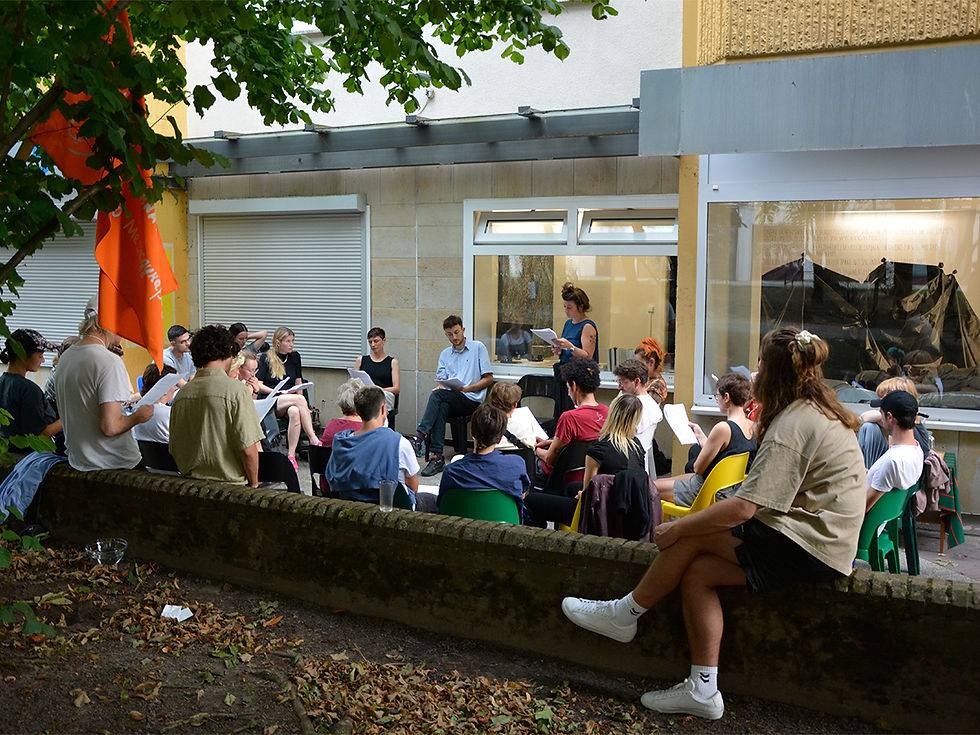
THE ESG SHITSHOW or We Can’t Afford a Tragedy of the Horizon is a collective reading and melodrama about the recent origins of greenwashing, and the people and finance structures that promote it. Comprised mostly of quotes that have been copy-pasted from the internet, the work features the voices of the World Bank, an idealistic UN representative, a disillusioned Black Rock sustainability investor, former US vice-president Al Gore, an expert leftist macroeconomist, an ecofeminist, and a self-righteous activist – among others.
The work is designed to be read aloud together. At the beginning of the online seminar, the artists will introduce the melodrama’s characters. The script will be shared, and attendees can choose to read a role. Everyone is encouraged to read badly, with conviction. The reading is followed by an open discussion, moderated by the artists.
THE ESG SHITSHOW or We Can’t Afford a Tragedy of the Horizon addresses questions around power and performativity, complicity, deep-seated structural inequalities, and what happens when representation is reduced to the management of risk. It has been performed in a number of activist and art-institutional contexts, from the Ende Gelände System Change Camp to the station urbaner kulturen/nGbK Hellersdorf.
Sonja Hornung & Daniele Tognozzi have been working in activist and cultural contexts in Berlin since 2015. In their artistic, research-based practice, they probe how art interacts with aesthetics and narratives relating to infrastructural change in the context of the climate crisis. Their more recent work focuses on how the financial sector interprets “sustainability”, and on the aesthetics and forms of representation of so-called “risk management”. Using drawings, installations, 3D renderings, posters and readings, they investigate how the profit-oriented energy transition affects reproductive, activist and artistic work.
Sonja Hornung & Daniele Tognozzi's collaboration grew out of the collectively curated project The Driving Factor (nGbK Berlin, 2020/2022). Recent commissions include new works for the group exhibitions -162 °C, 450 kg/m³ Fossil Energy, Fragile Futures (Kunsthalle Wilhelmshaven, 2024) and The Air We Share (Deutsches Hygienemuseum, Dresden, 2024). Their first artistic work together was THE ESG SHOW, a duo exhibition at the Berlin project space SIGN, Ciat, which was later exhibited in the frame of Research for Tomorrow (Bucharest 2023), cuerpos de agua (nGbK Hellersdorf 2023), and teleconnections (D21, Leipzig, 2024). Their works have additionally been shown at the Prater Galerie (2021), after the butcher (2020), Schloss Biesdorf (2020), Haus der Kulturen der Welt (2019), Kunstsalon fluc (Vienna, 2021), Forum Stadtpark (Graz, 2017), and the Art Encounters Biennale (Timisoara, 2016), among others.
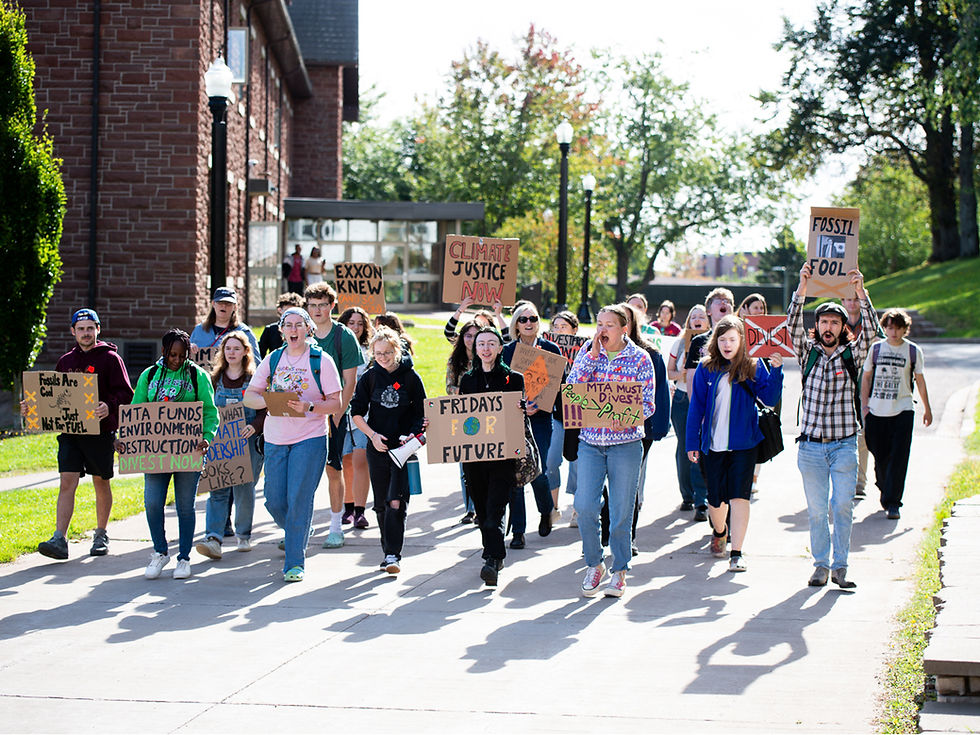
Wed. NOV. 20 19h (AST)
Divest MT. A. | hybrid live and zoom presentation.
Founded in 2013, Divest MTA is a student-led campaign at Mount Allison University seeking climate justice through advocating for divestment from the fossil fuel industries. This campaign began as a project for an environmental activism class, where discussions about the growing fossil fuel divestment movement inspired a small group of students to start demanding environmental and social sustainability from the school. The broader divestment movement seeks to encourage institutions to remove financial investments from unethical industries, such as mining and fossil fuels. The primary demands of Divest MTA have remained the same in the 11 years since the movement first began: immediately freeze new investments in the top 200 publicly traded fossil fuel companies and divest from direct ownership and any commingled funds that include fossil fuel equities and corporate bonds. Various actions have been taken throughout the movement’s lifetime, including meetings with the institution’s investment committee and its board of regents, a 72-hour camp-out on campus grounds, letter-writing campaigns, sit-in protests in the administrative building, and regular climate strikes following the Fridays for Future movement, amongst many other actions. While the movement has faced many barriers and opposition from many stakeholders, it has also received the support of many faculty and community members who support the campaign’s demands. Students involved in this movement believe in social and environmental justice and wish to see these principles upheld by Mount Allison University. This campaign will not rest until Mount Allison University
divests.
Sun. NOV. 24, 14h (AST)
Ana Alenso | What the Mine Gives, The Mine Takes
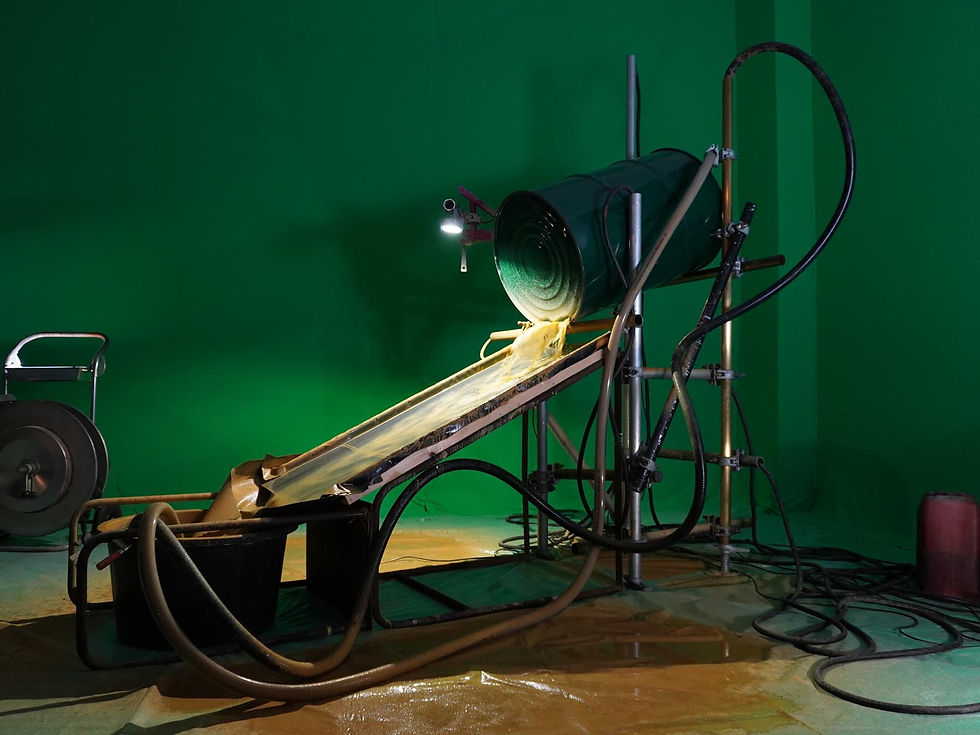
During the last years, Alenso has conducted extensive field visits to diverse mines and industrial complexes. This research has facilitated the development of a substantial body of work that comprehensively examines the mechanisms involved in natural resource extraction from various perspectives: critical, poetic, and material. Her research delves into speculative inquiries concerning present context-specific issues and possible future trajectories of extractivist practices. Moreover, it navigates the intersectionality of art, socioecological, historical, economic, and philosophical dimensions.
Ana Alenso will present her project What the Mine Gives, the Mine Takes. This project, developed in collaboration with the environmental organization SOSOrinoco, focuses on the recent expansion of the mining conflict in the Guyana and Venezuelan Amazon regions. Alenso presents a sculptural landscape where the mechanisms and consequences of mining are revealed as signs of self-destruction and an anthropocentric modus operandi. The contradictions and uncertainties driven by economic turbulence and the ongoing export of resources are expressed in the exhibition space both aesthetically and tangibly through a sculptural "machine." The project's artistic research culminated in the 2023 publication What the Mine Gives, the Mine Takes, which includes contributions from 12 multidisciplinary collaborators, also to be presented by the artist.
Ana Alenso creates assemblages, installations, videos and photographs that explore the entanglement of conflicts and paradoxes rooted in the petrocultures of the last centuries. Her work is shaped by field studies and multidisciplinary exchanges, with a focus on materiality and ecology through the use of post-industrial elements and experimental processes. Alenso studied Media Art & Design at the Bauhaus University Weimar, Art in Context at the Berlin University of the Arts and Painting at the Armando Reveron University of the Arts in Caracas.
She has been the recipient of numerous awards and grants, including the Stiftung Kunstfonds, the DAAD, the Berlin Senate Department for Culture and Europe, and the Berlin Art Prize. Her recent exhibitions include Island Innovator, Kunstverein Arnsberg, 2024; The South – Narratives of Extraction, Kunsthalle Färgfabriken, Stockholm, 2024; Geneva Biennale: Sculpture Garden, Switzerland, 2022; Street Fight, Museum of Modern Art, Warsaw, 2022; Beauty and Horror of the Oil Age, Kunstmuseum Wolfsburg, 2021; The Conference: Experience of Oil, Stavanger
Museum, Norway, 2020; The Garden Bridge, Brücke Museum, Berlin, 2019 and The Museum of Democracy, NGBK, Berlin, 2022. In 2023 she published her first book, Lo que la mina te da, la mina te quita, by BOM DIA BOA TARDE BOA NOITE.
Wed. NOV. 27, 19h (AST)
Anna Stanley | The Financial Geography of investment in the Ring of Fire
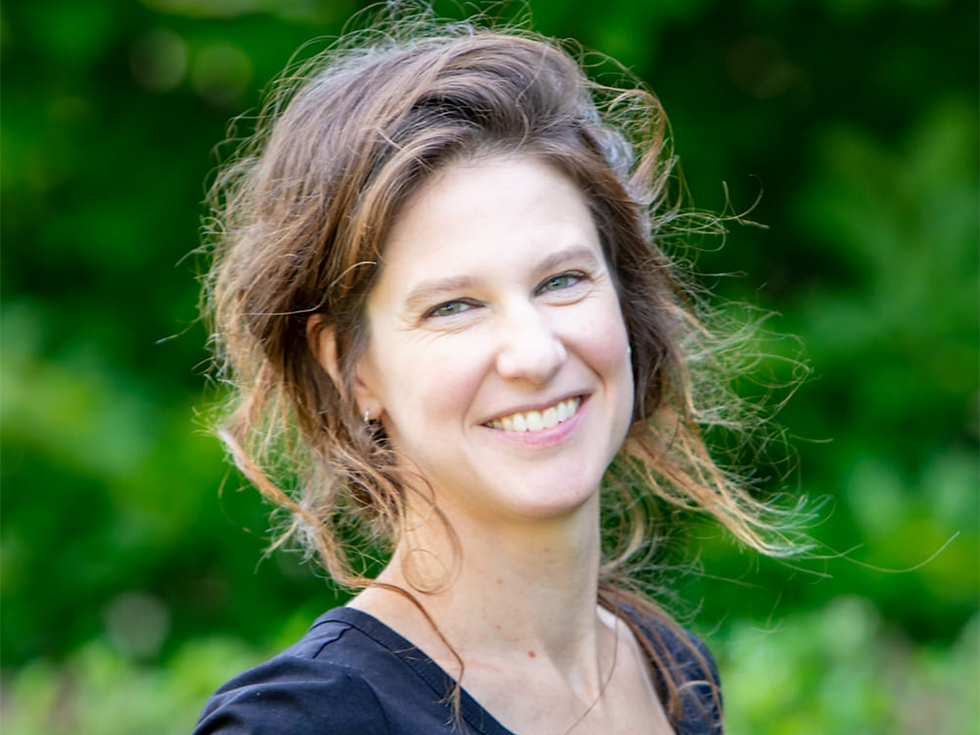
This lecture engages financial transactions associated with the development of mining in Anishinaabe, Anishini and Cree homelands of Treaty 9 in Ontario’s far north; an area more colloquially known as the “Ring of Fire”. These transactions (and the resulting flows of wealth into and out of the Anishinaabe, Anishini and Cree lands) connect distant and disparate places across continents and jurisdictions (including Indigenous ones) from Canda and Australia and elsewhere, in ways that I suggest demonstrate important colonial continuities. Joining the dots between practices of exploration finance, taxation, philanthropic donation, and infrastructure investment linked to the development of mining in the area, I engage the production and maintenance of colonial land relations at sites across the fiscal/financial geography of investment in the Ring of Fire.
Anna Stanley is Assistant Professor at the University of Guelph in the Department of Geography, Environment and Geomatics. Prior to Joining the university of Guelph she was faculty at the National University of Ireland, Galway. She has also held a number of visiting professorships including at the university of Ottawa, York University and the University of Toronto. Her research focuses on the political economy of settler colonialism in Canada with specific reference to mining and mineral exploration, infrastructure development, extractive finance and toxic exposure.
We acknowledge the support of the Canada Council for the Arts.


This talk by Sebastian De Line touches on crucial themes that could serve as a rich foundation for a PhD thesis. The examination of Indigenous labor and the commodification of resources, alongside the contrasting narratives of "clean" versus "blood" diamonds, raises important questions about ethics in art and extraction. The case study of the Foxfire diamond opens up avenues for exploring the implications of colonial narratives in museum collections, making it a compelling intersection of art, anthropology, and economics worthy of further academic exploration.